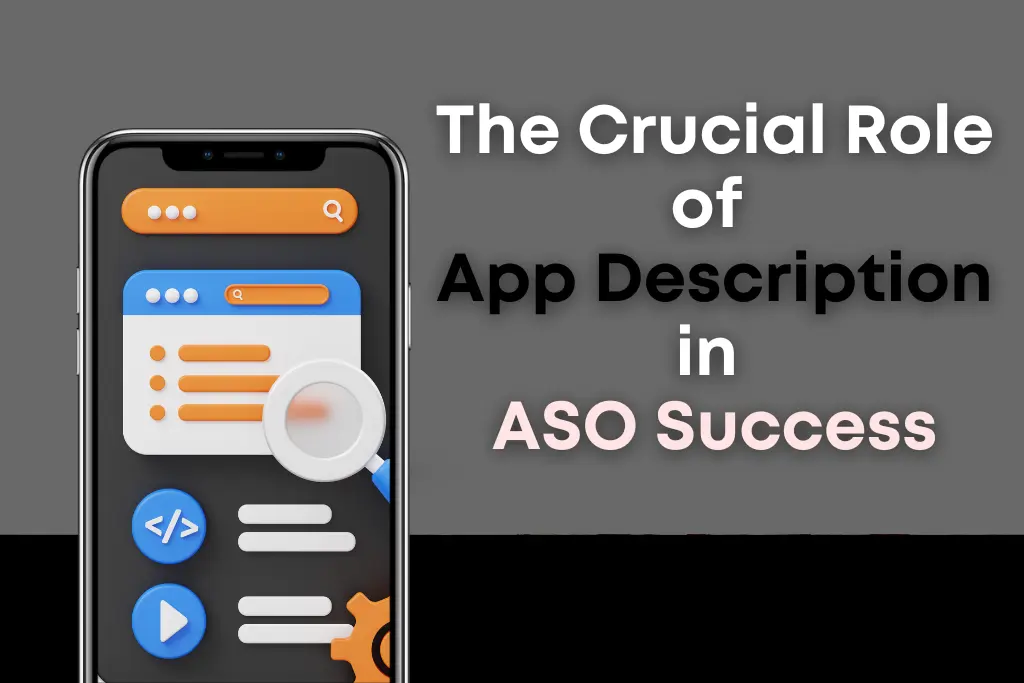Navigating the Landscape of App Description in ASO

In the dynamic realm of mobile applications, the significance of App Store Optimization (ASO) cannot be overstated. As developers and marketers strive for enhanced visibility and increased downloads, the app description emerges as a linchpin in the ASO strategy. This comprehensive guide delves into the intricacies of app descriptions, offering actionable insights on optimization techniques, platform-specific requirements, examples, and best practices for developers aiming to amplify their app’s reach.
What is the App Description?
At its core, an app description serves as the narrative that introduces users to the functionalities, features, and unique aspects of a mobile application. It functions as a marketing asset, providing a succinct overview of the app’s value proposition and reasons why users should engage with it. In the context of ASO, the app description becomes a crucial component influencing an app’s ranking on platforms like the App Store and Google Play.
Optimizing ASO App Descriptions: A Strategic Approach
1. Conducting In-Depth Keyword Research:
One of the foundational steps in optimizing app descriptions is conducting thorough keyword research. Identify keywords relevant to your app’s niche and user intent. Utilize tools like Google Keyword Planner, App Annie, or Sensor Tower to discover high-ranking and frequently searched keywords. This groundwork forms the basis for embedding strategic keywords in your app description.
2. Crafting a Compelling Title:
The title is the first point of contact users have with your app, and it plays a pivotal role in ASO. Incorporate primary keywords into the title while maintaining a concise and captivating structure. A well-crafted title not only aids in search visibility but also entices users to explore the app further.
3. Utilizing Concise and Informative Language:
Clarity and brevity are essential in conveying your app’s value proposition. Use a combination of short sentences, bullet points, and easy-to-understand language to communicate key features. A conversational tone can engage users effectively, making the app description more accessible and appealing.
4. Highlighting Key Features:
The app description should serve as a showcase for your app’s standout features. Prioritize and emphasize features that distinguish your app from competitors. Clearly articulating the unique selling points helps users understand the benefits of choosing your app over others in the crowded app marketplace.
5. Appealing to Emotions:
Connect with users on an emotional level by addressing their pain points and desires. Craft the app description in a way that showcases how your app can solve real-world problems or enhance users’ lives. Creating an emotional connection fosters a sense of resonance, making users more likely to download and engage with the app.
6. Localizing Content:
In a global market, localization is key. Translate the app description into multiple languages to broaden your app’s appeal to diverse audiences. Consider cultural nuances and preferences when adapting content for different regions, ensuring that the message resonates effectively.
App Store and Google Play Description Requirements
Understanding the specific requirements of major app platforms is crucial for effective optimization.
1. App Store:
Apple’s App Store has specific guidelines for app descriptions. Keep the following in mind:
Limit the description to 4,000 characters.
Use relevant keywords judiciously without resorting to keyword stuffing.
Adhere to Apple’s policies and guidelines to avoid rejection.
2. Google Play:
Google Play, on the other hand, has its own set of requirements:
The short description is limited to 80 characters and should succinctly convey the essence of the app.
The long description allows for up to 4,000 characters, providing ample space for detailed information.
Ensure compliance with Google’s policies to maintain the app’s visibility on the platform.
Examples of Well-Optimized App Descriptions
Analyzing successful examples can provide valuable insights into effective app description strategies.
1. Headspace (Meditation & Sleep):
Title: “Headspace: Meditation & Sleep”
Description: “Meditation made simple. Guided meditations and sleep stories for mindfulness and relaxation. Learn how to manage stress and anxiety, sleep better, and bring more calm into your life.”
This example encapsulates the essence of the app concisely, emphasizing key benefits and addressing user needs directly.
2. Grammarly Keyboard:
Title: “Grammarly Keyboard — Type with confidence”
Description: “Correct your grammar, spelling, and punctuation on the go. Boost your writing efficiency with suggestions for better clarity and tone. Type confidently anywhere, from emails to social media.”
Grammarly Keyboard’s description is not only informative but also instills confidence in users by highlighting the app’s capability to enhance writing skills across various platforms.
Tips and Best Practices for App Descriptions
Beyond the basics, incorporating these tips and best practices can elevate your app description strategy:
1. Regular Updates:
Keep the app description aligned with each new release. Highlight the latest features, improvements, or any accolades received. An updated description signals to users that the app is actively maintained and continuously evolving.
2. A/B Testing:
Experiment with different descriptions to gauge user response. Conduct A/B testing by presenting variations of your app description to different user segments and analyzing the performance metrics. This data-driven approach enables you to refine your description for optimal impact.
3. Encourage Reviews:
Positive reviews contribute significantly to an app’s credibility and visibility. Politely encourage users to leave reviews by integrating strategic calls to action within the description. Feature positive testimonials in the app description to reinforce the app’s value proposition.
4. Visual Elements:
Consider incorporating visual elements, such as screenshots and videos, within the app description. Visuals provide users with a preview of the app’s interface and features, enhancing their understanding and engagement.
5. User-Focused Language:
Frame your app description with a user-centric perspective. Instead of focusing solely on what the app does, highlight the benefits users will derive from using it. Speak directly to your target audience, addressing their needs, concerns, and aspirations.
Conclusion: Crafting Success Through Optimized App Descriptions
In the ever-evolving landscape of mobile applications, mastering the art of app descriptions is a strategic imperative for developers and marketers alike. A well-optimized app description is not merely a formality but a dynamic tool that can significantly impact an app’s discoverability, user acquisition, and overall success.
By meticulously implementing the steps outlined in this guide – from conducting thorough keyword research and crafting compelling titles to adhering to platform-specific requirements – developers can create app descriptions that stand out in the crowded digital marketplace. Real-world examples and practical tips further reinforce the applicability of these strategies.
In conclusion, the journey to ASO success begins with recognizing the app description as a potent instrument in shaping user perceptions and driving downloads. Embrace the multifaceted aspects of app description optimization, stay attuned to market trends, and continuously iterate based on user feedback to ensure your app not only survives but thrives in the competitive app ecosystem. The power to unlock your app’s full potential lies within the art and science of crafting a compelling and strategic app description.
Do you Want
More App Downloads?
Boost the Mobile App Growth with the Ultimate Mobile App Marketing Experts
Latest Blogs
Do you Want
More App Downloads?
Boost the Mobile App Growth with the Ultimate Mobile App Marketing Experts
The app description serves as a crucial marketing tool, influencing search visibility and user decisions. A well-optimized description enhances ASO, leading to increased downloads.
Utilize tools like Google Keyword Planner, App Annie, or Sensor Tower to identify relevant keywords. Focus on those that align with your app’s niche and user intent.
For the App Store, limit the description to 4,000 characters. On Google Play, the short description is 80 characters, and the long description allows up to 4,000 characters.
Use concise and informative language, highlight key features, appeal to emotions, and maintain a conversational tone. Incorporate user-focused language to enhance engagement.
Examples include Headspace (“Meditation made simple”) and Grammarly Keyboard (“Correct grammar on the go”). These showcase clarity, benefits, and unique selling points.
Yes, A/B testing helps identify the most effective description variants. Experiment with different content to understand user preferences and optimize for maximum impact.
Regularly update your app description with each new release. Highlight the latest features and improvements to convey that the app is actively maintained and evolving.
Yes, consider incorporating visuals like screenshots and videos. Visual elements provide users with a preview of the app’s interface and enhance overall understanding.
Politely encourage users to leave reviews within the app description. Highlight positive testimonials to reinforce the app’s value proposition and build credibility.
Yes, localizing content by translating descriptions into multiple languages broadens the app’s appeal to diverse audiences. Consider cultural nuances for effective adaptation.




